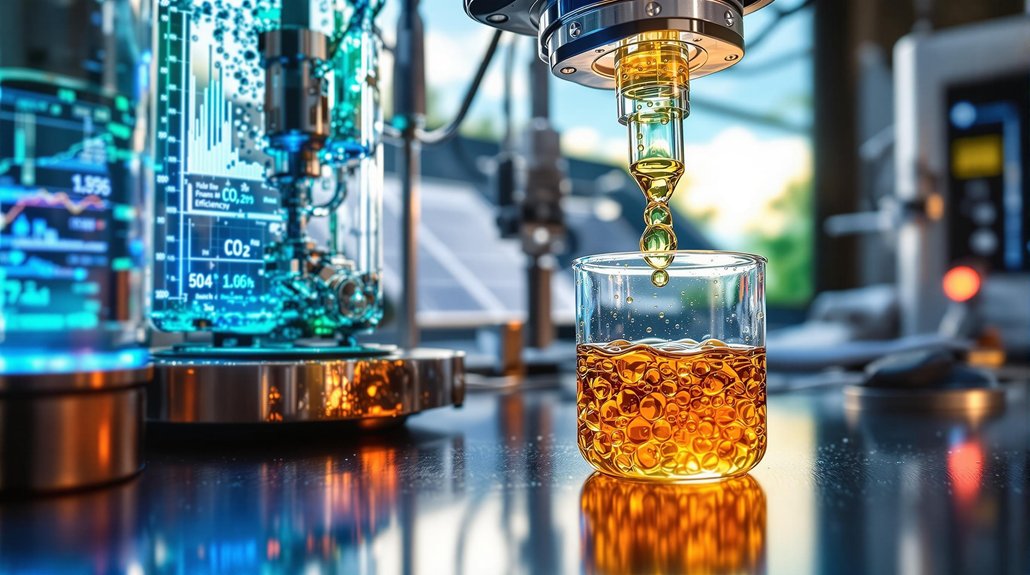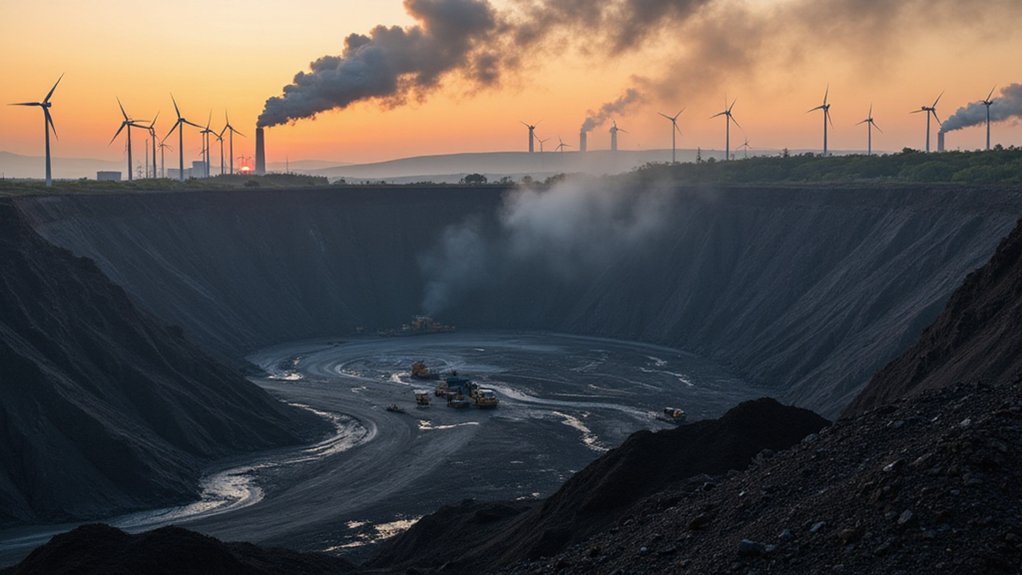Recent breakthroughs have dramatically reduced CO2-to-fuel conversion times from days to just minutes. Stanford researchers developed catalysts that improve efficiency by 1,000 times, achieving over 90% conversion rates using copper-based materials. NASA has created solar-powered devices that recycle carbon dioxide with zero carbon footprint, while MIT and Harvard collaborated on stable fuel alternatives that don’t require special storage. These innovations could transform harmful emissions into valuable products while addressing climate concerns.
Scientists are transforming harmful carbon dioxide into useful fuels through groundbreaking technology. Recent advances have dramatically cut conversion times from days to just minutes, marking a major step forward in the fight against climate change. These innovations could help reduce greenhouse gases while creating valuable products from what was once considered waste.
Traditional CO2 conversion methods were slow and inefficient, converting less than 20% of captured carbon dioxide into usable fuel. Now, new catalysts developed by Stanford researchers have increased conversion efficiency by 1,000 times. These catalysts help form bonds between carbon atoms to create longer hydrocarbon chains suitable for gasoline and other fuels.
Stanford’s new catalysts boost CO2 conversion efficiency 1,000-fold, transforming waste carbon into valuable hydrocarbon fuels.
The most exciting breakthrough comes from electrochemical reactions using copper-based catalysts. These can now achieve over 90% efficiency when converting CO2 into ethanol. That’s a vast improvement over older two-step processes that dominated the field until recently.
NASA has contributed to this progress with solar-powered thin-film devices that recycle carbon dioxide into fuel with zero carbon footprint. Similar to how green hydrogen is produced through electrolysis using renewable energy, these processes aim to create carbon-neutral fuel alternatives. These compact, cost-effective systems integrate renewable energy with CO2 conversion, reducing dependence on fossil fuels while creating useful products.
Another promising development converts CO2 into potassium or sodium formate, which serves as a stable, easy-to-transport fuel alternative. Unlike some fuels, these compounds don’t require special storage conditions, making them practical for real-world use. A collaboration between MIT and Harvard has developed a process that uses liquid metal bicarbonate as an intermediate step to achieve this high-efficiency conversion.
Despite these advances, challenges remain. Creating long-chain hydrocarbons still requires significant energy, high temperatures, and pressure. Initial costs for implementing these technologies are substantial, though they promise long-term benefits. The innovative catalyst using ruthenium coated in plastic represents a more cost-effective alternative to precious metals traditionally used in these processes.
The environmental impact of these innovations can’t be overstated. By recycling CO2 from power plants and industrial facilities, these processes prevent harmful emissions from entering the atmosphere. They also create economic incentives by turning pollution into profit.
As research continues, CO2-to-fuel conversion might soon be both environmentally responsible and commercially viable.








